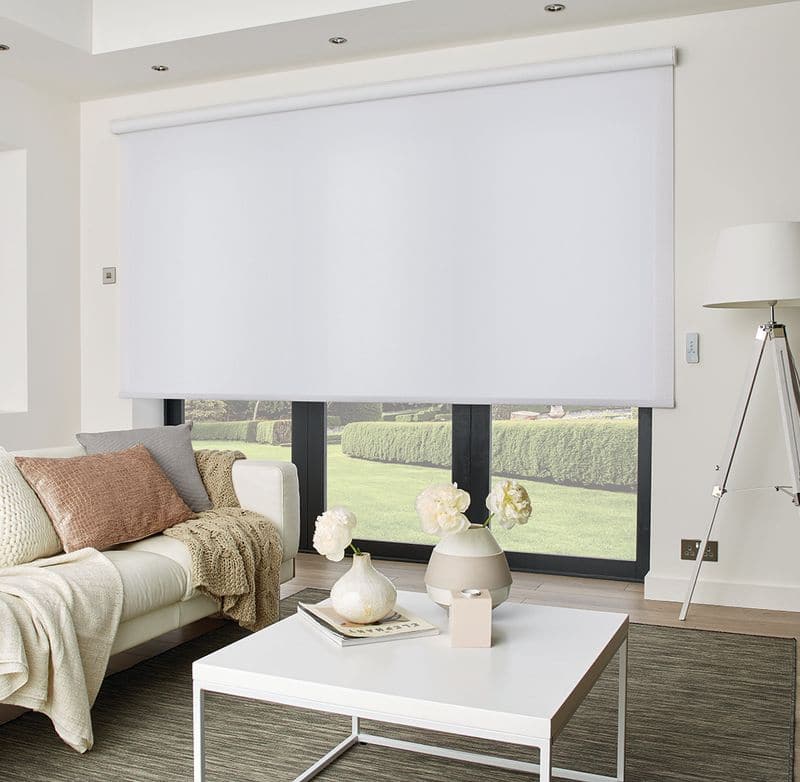Once your blind or window treatments are fitted, there is a question that many people ask … should I have my blinds turned up or down?
Maybe you have your own preference, however here at Yorkshire Blinds, our expertise can help you make the most of your blinds within your home.
What type of blind have you got?
The first and obvious question to ask yourself is: what type of blind do I have installed?
If you have horizontal blinds fitted, with slats going across your window, these can be tilted in various directions.
Their tilt direction depends on your own requirements which is one of the reasons why horizontal blinds are a good choice for many householders.
This article will deal with the main elements you need to consider about how to use your blinds once installed.
Vision Blinds
These relatively new types of blinds have an innovate method of mixing light entry and privacy in an elegant manner.
Their design allows for complete privacy as they are made of two fabric types that move independently and depending on their colour, will always allow light to enter while offering an element of privacy if your room is overlooked.

Horizontal and Venetian Blinds – Upwards
Tilting them in an upwards direction means passers-by can’t see into your home. This is a good option if you’re living in an urban environment and if some of your windows are street-facing.
Tilting them up means the convex side of each slat faces outwards and there are fewer gaps to see through.
By tilting them upwards, the concave side of each slat will be facing inwards, and this can give you more control over how much light comes into the room.
Depending on the material from which your horizontal blinds are made from, the up position can also enable any coarse edges to be hidden.

Horizontal and Venetian Blinds – Downwards
Turning your blind slats into the downwards position can create a more elegant, aesthetically pleasing look. The edges can appear softer.
However, this means less privacy as more light is admitted into the room.
Having the slats in the downwards position not only admits additional light this can allow more heat to enter the room if the weather is hot outside.
The down position is suitable if you want more light in the room however nosey passer’s by can catch a glimpse of the interior if they so wish!
Vertical Blinds
With these types of blinds, the choices are more ‘open’ and ‘close’ but with a variety of angles in between!
The varied angles can be adjusted to your own wishes with regards to privacy and light admission.
Keeping your vertical blinds in the ‘closed’ position allows for maximum privacy. Depending on the material your vertical blind is made from, particularly the degree of opacity, you may require additional artificial lighting inside the room itself.
Vertical blinds are usually better in a less public-facing room although it is down to personal preference.

Roman Blinds
These are similar to roller blinds in that their elegant, textured design can let in as little or as much light as is required.
Roller Blinds
Pretty much one or the other with these blinds!
These are usually effective in kitchens and bathroom, or in rooms which are away from public gaze.
For these, while you can adjust the cord or want to reveal the proportion of the window the blinds covers (i.e., a quarter, half or more) these types of blinds are designed to be adjusted to the requirements of the homeowner, to the time of day and the position of the sun.

What About The Seasons?
In the UK, our changing seasons mean big differences in sunlight hours, temperature and humidity.
From the depths of winter to the heady days of summer, our windows and window blinds usually bear the brunt of all the changes!
As well as having good ventilation, some blinds such as horizontal varieties can tilt ambient heat either upwards or downwards into the room itself.
Also, if you are just starting out on your window blind journey, as a rule, blinds mounted inside the window frame can offer more warmth in the winter, as there is a cushion of air created between the blind and window. Colder air is kept against the window.
In the warmth of summer, the sun’s rays are belted out all day and they heat up just about anything, including the air outside. So, consider the times of day when there is most heat outside (usually the middle of the day) and adjust your blinds accordingly. For horizontal blinds this would usually mean having the slats turned upwards, projecting any heat upwards.
In winter you may wish to retain the heat inside the room so keeps slats or blinds downwards, allowing any warm air at ceiling height to descend lower into the room where it’s needed most.
Cleaning The Windows
Probably not one of our favourite tasks but remember to clean the interior of the glass windows … even if blinds are closed, there is always some moisture created inside the room and a film of dust and dirt can gather quickly. Always check for possible mould too and keep cleaning these areas.
Cleaning The Windows
We have an article about how best to do this task which is another that is perhaps low on the list of domestic chores.

